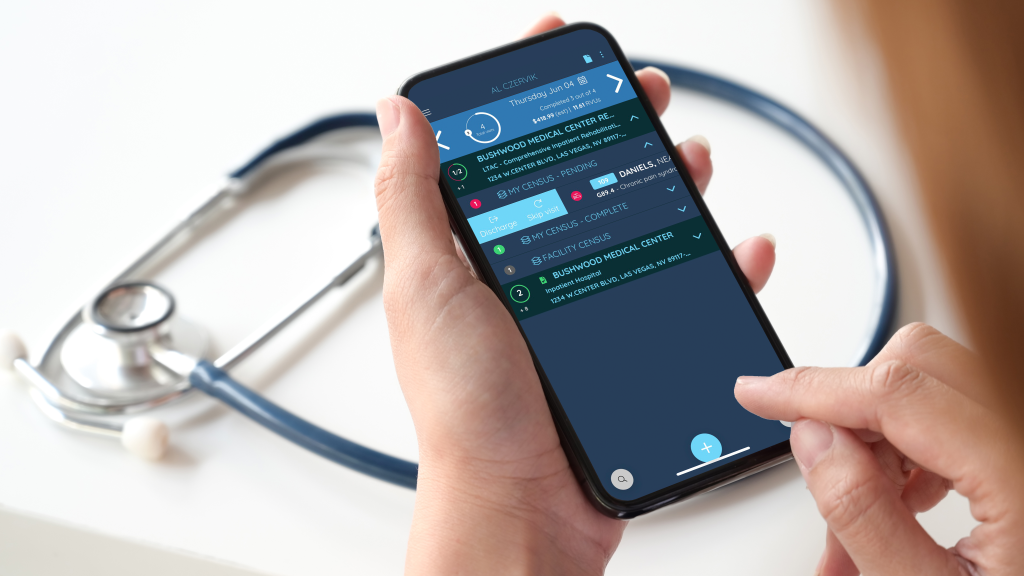In healthcare, every minute matters—and not just at the bedside. For physicians, administrative responsibilities like billing can consume a surprising amount of time, often cutting into time that could be spent on patient care. One of the most critical components of the billing process is charge capture—the act of recording and submitting billable services. Done incorrectly or delayed, it can lead to revenue loss, claim denials, and unnecessary stress.
Enter the charge capture app, a modern solution to a long-standing problem. These mobile applications are designed to help physicians and care teams document charges accurately and in real time, often right from their smartphones or tablets. They replace outdated paper forms, reduce manual errors, and make the entire billing process more efficient.
What Is a Charge Capture App?
A charge capture app is a mobile software tool that enables healthcare providers to log patient encounters and billable services as they happen. Whether a doctor is rounding in the hospital, seeing patients in the clinic, or consulting remotely, the app provides quick access to procedure codes, diagnosis options, and patient information.
These apps typically integrate with electronic health record (EHR) systems and billing software, creating a seamless bridge between clinical documentation and financial reimbursement. They are designed to be intuitive, secure, and adaptable to the fast-moving nature of healthcare.
Why Traditional Charge Capture Methods Fall Short
Historically, many physicians relied on memory, handwritten notes, or paper “charge tickets” to record services. In theory, these notes would be entered into the billing system later. In practice, this often led to missed charges, delayed submissions, and clerical errors.
Here are some of the most common issues with traditional charge capture:
- Forgotten entries due to time delays
- Illegible handwriting or unclear notes
- Difficulty tracking down paperwork across multiple locations
- Coding mistakes due to memory reliance
- Administrative bottlenecks that slow down claim submission
Even in more tech-savvy environments, desktop-based systems aren’t always accessible or convenient for mobile providers who move between sites.
Benefits of Using a Charge Capture App
A well-designed charge capture app solves many of the problems associated with traditional methods. Here’s how:
1. Real-Time Documentation
Physicians can log charges immediately after a patient interaction, while details are still fresh. This minimizes the risk of forgetting procedures and improves the accuracy of records.
2. Reduced Revenue Loss
Missed charges are one of the biggest culprits of lost revenue. By capturing charges in the moment, apps reduce omissions and ensure that all services rendered are billed appropriately.
3. Improved Coding Accuracy
Many apps come with built-in code libraries, search features, and validation tools that help users select the correct CPT, ICD-10, or HCPCS codes. This reduces errors and minimizes claim denials due to improper coding.
4. Faster Billing and Reimbursement
Since charges are submitted faster, the revenue cycle shortens. This leads to quicker reimbursements and better cash flow for healthcare organizations.
5. Workflow Efficiency
Charge capture apps reduce the administrative burden on providers, allowing them to spend more time focusing on patients. It also reduces the workload for billing departments, as they receive cleaner, more complete data.
6. Accessibility Across Locations
For providers working across multiple hospitals, clinics, or care settings, a mobile app ensures they can document consistently regardless of where they are. No more chasing paper forms or desktop access.
Key Features to Look For in a Charge Capture App
Not all apps are created equal. When evaluating a charge capture solution, healthcare organizations should look for:
- HIPAA compliance and strong data security protocols
- User-friendly interface for quick data entry
- Offline functionality for areas with limited connectivity
- Real-time syncing with billing and EHR systems
- Customizable templates based on medical specialty
- Support for multiple providers and group practices
- Audit trails and reporting capabilities
An app that includes these features will not only streamline charge capture but also provide insight into productivity, billing patterns, and potential areas for improvement.
Charge Capture in the Larger Revenue Cycle
Charge capture doesn’t exist in a vacuum—it’s the starting point of the revenue cycle. A mistake or delay at this stage can cause a domino effect through coding, claim submission, payer reimbursement, and patient billing.
By using a charge capture app, providers ensure that this first step is accurate and timely. This improves the quality of data throughout the system, enabling faster payments, fewer denials, and reduced time spent on rework.
Furthermore, as value-based care and accountable care models gain traction, accurate documentation becomes even more important. Not only does it impact payment, but it also plays a role in quality metrics and compliance reporting.
Challenges and Considerations
Adopting new technology always comes with a learning curve. Some providers may be hesitant to change long-standing habits. Additionally, integration with existing systems can require time and planning. That said, the long-term benefits—both financial and operational—typically outweigh the initial effort.
It’s also critical that any charge capture app used complies with industry regulations and is regularly updated to reflect coding changes and evolving payer requirements.
Final Thoughts
In an era where efficiency, accuracy, and mobility are essential in healthcare, a charge capture app is no longer just a nice-to-have—it’s a necessary tool. By enabling real-time, on-the-go documentation of billable services, these apps help providers recover lost revenue, reduce administrative strain, and focus more on what they do best: caring for patients.
As the healthcare landscape becomes increasingly digital and fast-moving, embracing smart, secure mobile solutions like charge capture apps is a logical step toward better outcomes—financially and clinically.

